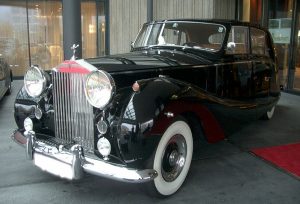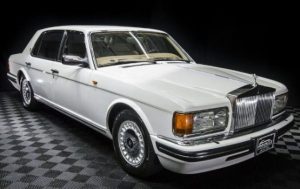 I don’t know…yet, if my son-in-law, Travis Royce has any connection to the Rolls-Royce families, but since my daughter, Amy Royce, and her husband Travis named their son Caalab Rolles Royce, I have felt a bit of a tie to the Rolls Royce vehicle line. Yes, my grandson’s middle name is spelled differently, but it makes it seem more like a last name and not a physical action. Because of my daughter’s family name, and my grandson’s name, I tend to read a story that is about the Rolls Royce. It just jumps out at me.
I don’t know…yet, if my son-in-law, Travis Royce has any connection to the Rolls-Royce families, but since my daughter, Amy Royce, and her husband Travis named their son Caalab Rolles Royce, I have felt a bit of a tie to the Rolls Royce vehicle line. Yes, my grandson’s middle name is spelled differently, but it makes it seem more like a last name and not a physical action. Because of my daughter’s family name, and my grandson’s name, I tend to read a story that is about the Rolls Royce. It just jumps out at me.
The Rolls-Royce cars are…high end elegance. They were first manufactured in 1904 By Henry Royce and Charles Rolls. These were not two men who were friends, and decided to build a car. Henry Royce was fourteen years older that Charles Rolls. He was a big, bearded, solid man, a workaholic and perfectionist, who worked hard for everything he had. As Rolls later said, he was “no ordinary man but a man of exceptional ingenuity and power of overcoming difficulties.” He was of Cambridgeshire farming stock…the son of a struggling miller. He had begun to earn money as a paper boy aged nine, somehow got an education at night school and took an engineering apprenticeship. Then he started an electrical engineering business in Manchester before designing and building his own car. It made an excellent impression for speed and reliability on a keen motorist named  Henry Edmunds, who knew Charles Rolls and more or less dragged him to meet Royce in Manchester. The two men became instant partners and agreed to form the Rolls-Royce car company. Rolls was so delighted with Royce’s quiet little two-cylinder car that he borrowed it on the spot, drove it back to London, woke Claude Johnson up in the middle of the night and insisted on giving him a ride in it. By the end of 1904 the first Rolls-Royces were came out, with the now characteristic radiator that would become the world’s best-known symbol of supreme motoring excellence.
Henry Edmunds, who knew Charles Rolls and more or less dragged him to meet Royce in Manchester. The two men became instant partners and agreed to form the Rolls-Royce car company. Rolls was so delighted with Royce’s quiet little two-cylinder car that he borrowed it on the spot, drove it back to London, woke Claude Johnson up in the middle of the night and insisted on giving him a ride in it. By the end of 1904 the first Rolls-Royces were came out, with the now characteristic radiator that would become the world’s best-known symbol of supreme motoring excellence.
The Silver Wraith was the first post-war Rolls-Royce. It was made from 1946 to 1958. It was designed for coachbuilders, and so was only a chassis. It was announced by Rolls-Royce in April 1946 as the 25/30 horsepower replacement for the 1939 Wraith in what had been their 20 horsepower and 20/25 horsepower market sector, that is to say Rolls-Royce’s smaller car. The size was chosen to be in keeping with the mood of post-war austerity. Even very limited production of the chassis of the larger car, the Phantom IV, was not resumed until 1950 and then, officially, only for Heads of State. The car had improvements, such as chromium-plated cylinder bores for the engine; a new more rigid chassis frame to go with new independent front suspension and a new synchromesh gearbox. The chassis now had centralized lubrication. The engine was a straight six-cylinder, which had been briefly made for the aborted by war Bentley Mark V. To this prewar mix Rolls-Royce added chromed bores. Initially, this engine had the Mark V’s capacity of 4,257 cc. It was increased from 1951 to 4,566 cc and in 1955, after the introduction of the Cloud, to 4,887 cc  for the remaining Silver Wraiths.
for the remaining Silver Wraiths.
Personally, I would love to find the connection between my grandson and Henry Royce, which I suspect exists. Of course, the whole family would be connected, but Caalab’s connection would be especially cool, because of the tie to his name. When he got old enough to think about cars, he told me that he was going to buy a 97 Rolls Royce for his name and birth year. I suppose he still could, but I think they are getting pretty scarce these days, at least for that specific year. Nevertheless, the Silver Wraith was never something Caalab was interested in, as far as I know.


Leave a Reply